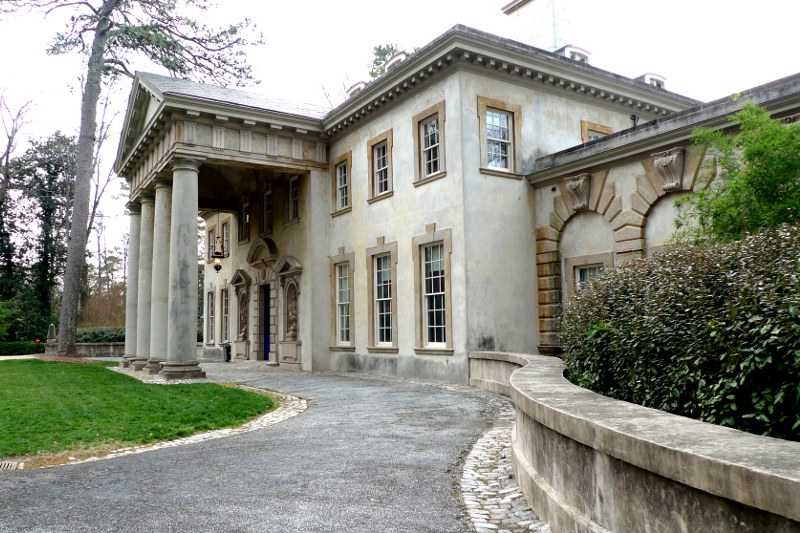Completed in 1928, Swan House was the home of Mr. and Mrs. Edward Inman, heirs to a post-Civil War cotton brokerage fortune. The Inmans hired Hentz, Reid and Adler to design the house; Philip Trammell Shutze served as principle architect. Shutze drew on classical elements as inspiration for this house and its gardens.
Mrs. Inman lived at Swan House with son Hugh and family after Mr. Inman’s death in 1931. After her death in 1965, the Atlanta Historical Society purchased the house and its 28 acres. Today, Swan House contains many original furnishings as well as the Shutze decorative arts collection. Tour the house and grounds and experience the servant-based lifestyle that was characteristic of Atlanta’s elite during the 1920s and 1930s.
I would have missed the Swan House, except I got lost and while trying to find my way back to West Paces Ferry Road in Buckhead I saw the house from the road. Tours run daily and can be booked at the Atlanta Historical Society; this is the only way to see inside the manor. Photos are also prohibited inside (the ones below come courtesy the Atlanta Historical Society).
The house is named the Swan House because a swan motif exists decoratively and architecturally throughout the mansion — this is first evident in the back above the door. During the tour, I learned that this swan motif started with a set of swan-necked tables found in the formal dining room.
Once inside the first thing you see is a checker tiled foyer that leads to a lovely spiral staircase. Members of the staff and household were never allowed to use the spiral staircase or step on the black tiles for fear of scuffing them — they could only step on the white tiles and use a staircase found at the back of the house. Only guests could use the main staircase.
Politically, Edward Inman served as a county commissioner in Atlanta in 1930 and ran for Mayor during the 1919-1920 election; he was a close friend and supporter of Franklin D. Roosevelt.
As a politician, Edward entertained guests in an airy but very male library. When the house was sold to the AHS it was sold as is; so, the books, photos, decorations, furniture are exactly as they were when the family lived there. The thing that struck me about this particular room was how comfortable it was. A perfect room for entertaining political guests.
If the men had their own “sitting room”, then the women undoubtedly had their own as well. On the other side of the house is a room used by Emily Inman and her female guests.
Emily was no shrinking violet. After her husband died rather suddenly in 1931 (during the Great Depression), instead of fading away she promptly hired a financial adviser to help her manage the family fortune and teach her the ins and outs of investing in the stock market. Every morning she retired to her sitting room to manage her investments. This is thought to have played a huge part in the continued success of the Inman family during and after the Depression.
Mrs. Inman died in 1965 in this same sitting room as she was putting together a grocery list. She was 84-years old.
